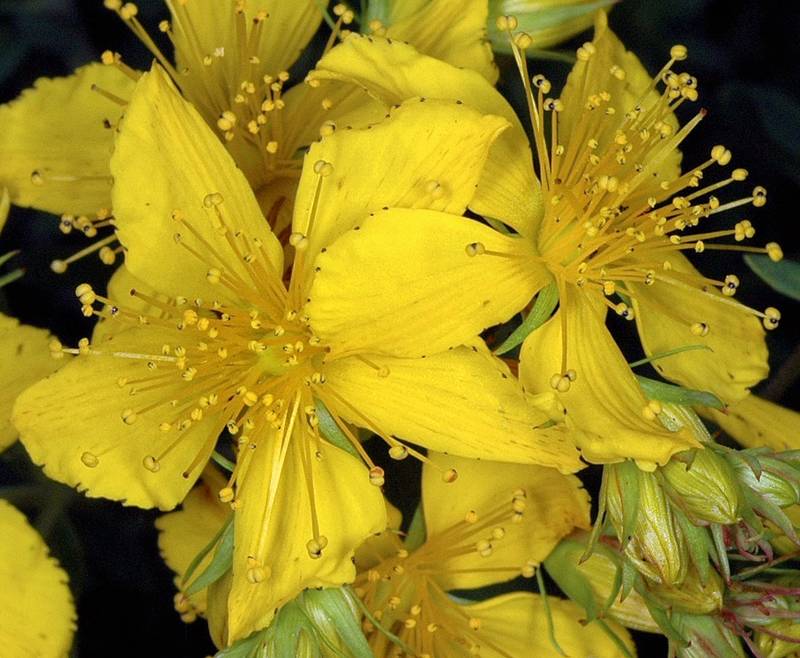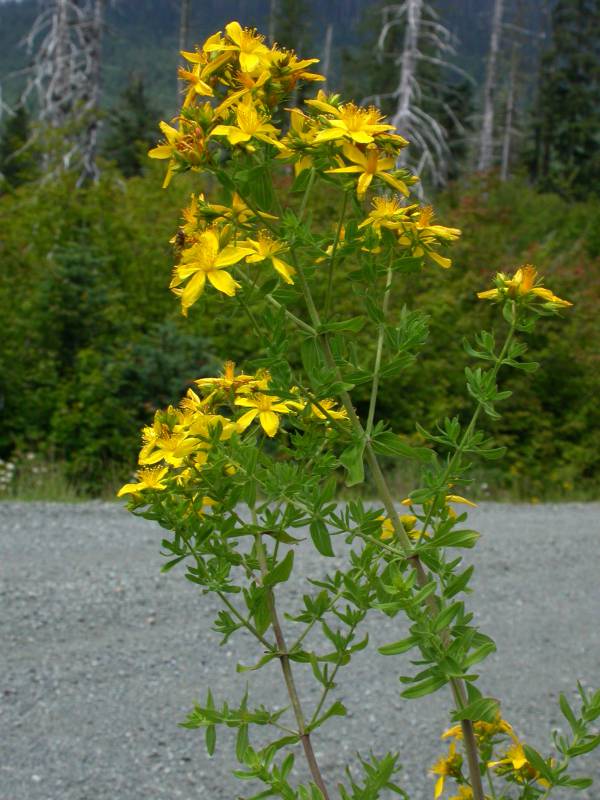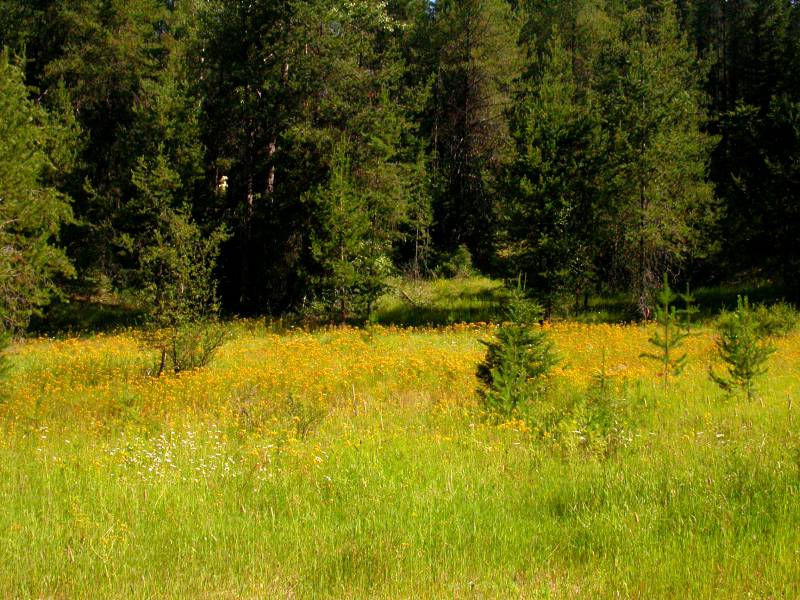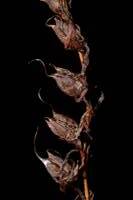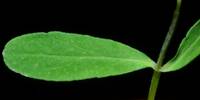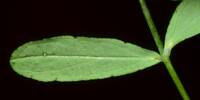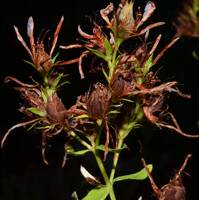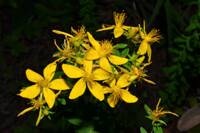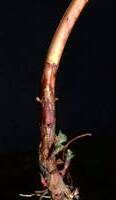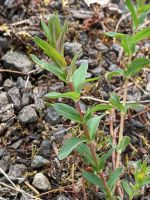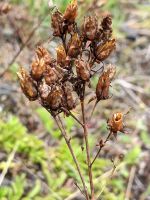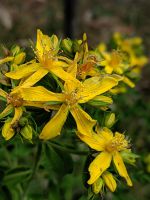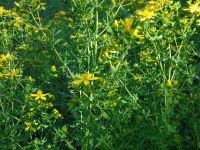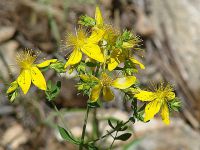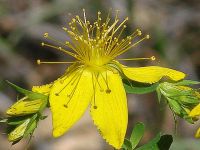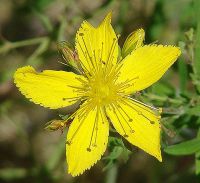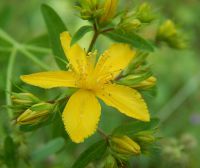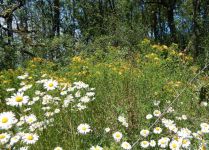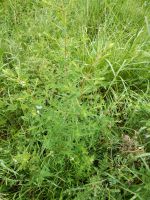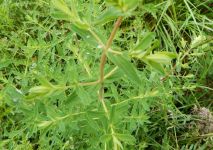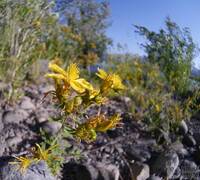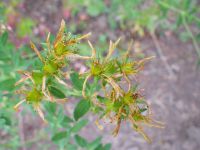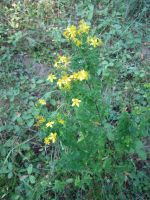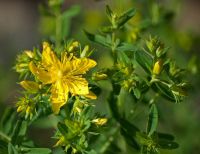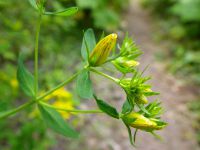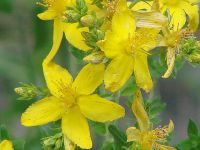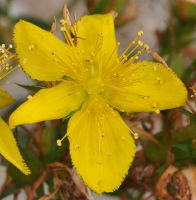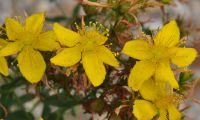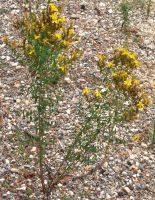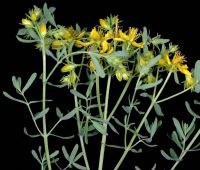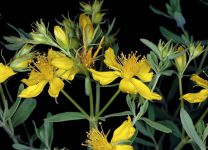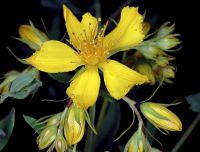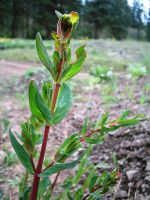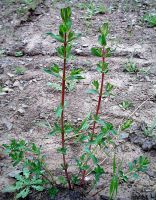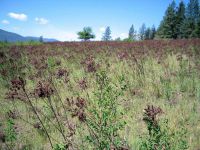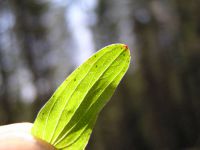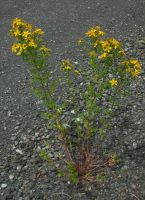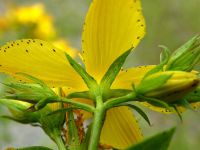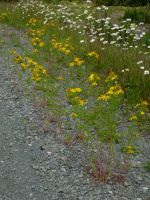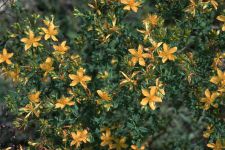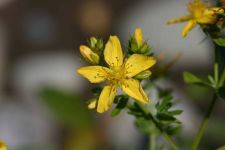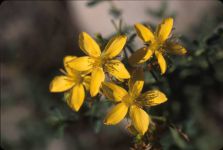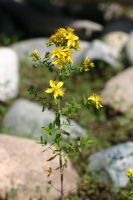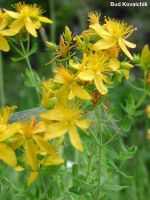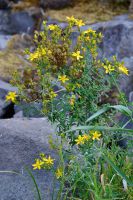Distribution: Occurring on both sides of the Cascades crest in Washington; Alaska to California, east across North America to the Atlantic Coast.
Habitat: Noxious weed of fields, meadows, roadsides, forest edge, wastelots, and other disturbed areas from the lowlands to near subalpine.
Flowers: June-July
Origin: Introduced from Europe
Growth Duration: Perennial
Conservation Status: Not of concern
Pollination: Bumblebees, bees, flies, wasps
Taprooted perennial with short rhizomes, the stems erect, 1-several, freely-branched, 3-8 dm. tall.
Leaves opposite, sessile, narrowly spatulate-oblanceolate to lanceolate, 1-3 cm. long, dotted with purplish-black, not clasping, but connected by narrow, wing-like structures at the base.
Inflorescence of large, many-flowered, leafy-bracteate, compound cymes; sepals 5, lanceolate, acute, 5-7 mm. long; petals 5, yellow, about twice as long as the sepals, their margins with conspicuous, black spots; stamens 75-100, attached at the base into 3 distinct groups; styles 3.
Capsule 5-8 mm. long, 3-celled, acute.
Publication: Sp. Pl. 2: 785. 1753.
-
ssp. perforatum
 Occurring on both sides of the Cascades crest in Washington; Alaska to California, east across North America to the Atlantic Coast.
Occurring on both sides of the Cascades crest in Washington; Alaska to California, east across North America to the Atlantic Coast.
PNW Herbaria: Specimen records of Hypericum perforatum in the Consortium of Pacific Northwest Herbaria database
WA Flora Checklist: Hypericum perforatum checklist entry
OregonFlora: Hypericum perforatum information
E-Flora BC: Hypericum perforatum atlas page
CalPhotos: Hypericum perforatum photos

